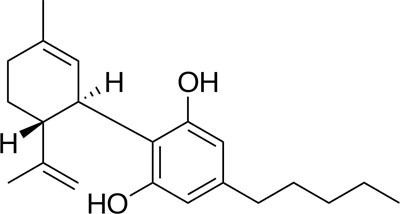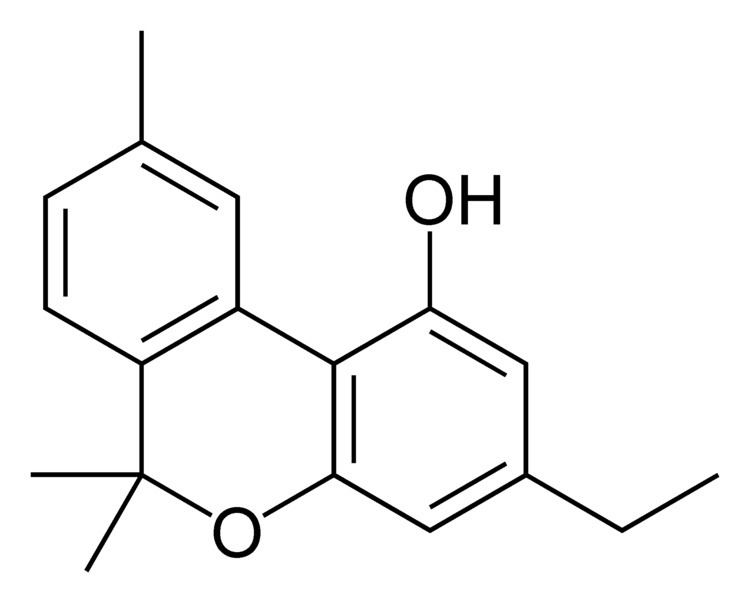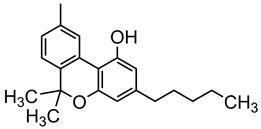ATC code none PubChem CID 2543 ChemSpider 2447 | CAS Number 521-35-7 IUPHAR/BPS 740 Molar mass 310.4319 g/mol | |
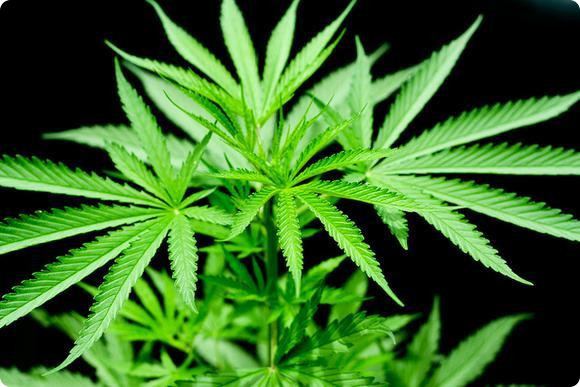 | ||
Legal status CA: Schedule IIUK: Class B | ||
Cannabinol (CBN) is a weak psychoactive cannabinoid found only in trace amounts in Cannabis sativa and Cannabis indica. Pharmacologically relevant quantities are formed as a metabolite of tetrahydrocannabinol (THC) . CBN acts as a partial agonist at the CB1 receptors, but has a higher affinity to CB2 receptors, however; with lower affinities in comparison to THC. Degraded or oxidized cannabis products, such as low-quality baled cannabis and traditionally produced hashish, are high in CBN, but modern production processes minimize the formation of CBN. Cannabinol has been shown to have analgesic properties.
Contents

Unlike other cannabinoids, CBN does not stem from cannabigerol (CBG) but rather is the degraded product of THC. If cannabis is exposed to air or ultraviolet light (for example, in sunlight) for a prolonged period of time, tetrahydrocannabinolic acid (THCA) will convert to cannabinolic acid (CBNA). CBN is then formed by decarboxylation of CBNA.
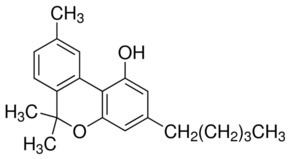
Chemistry

In contrast to THC, CBN has no double bond isomers nor stereoisomers. Both THC and CBN activate the CB1 and CB2 receptors.
Legal status
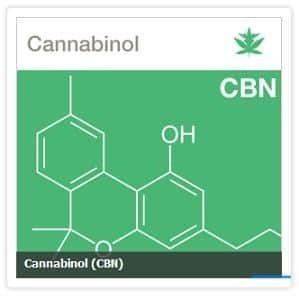
CBN is not listed in the schedules set out by the United Nations' Single Convention on Narcotic Drugs from 1961 nor their Convention on Psychotropic Substances from 1971, so the signatory countries to these international drug control treaties are not required by said treaties to control CBN.
United States
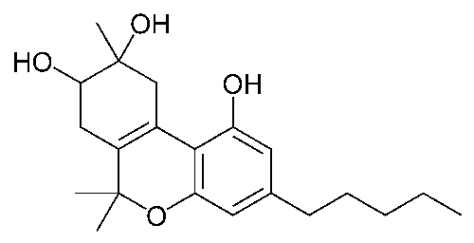
CBN is not listed in the list of scheduled controlled substances in the USA. It is therefore not scheduled at the federal level in the United States, but it is possible that CBN could legally be considered an analog of THC, and therefore sales or possession could potentially be prosecuted under the Federal Analogue Act. It is also possible that CBN may not meet the legal standard of an analogue (of THC) for the purposes of bringing forth a prosecution under the Federal Analogue Act.
